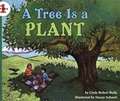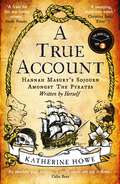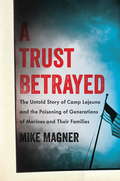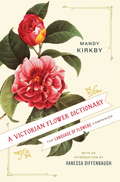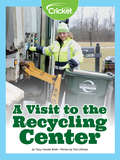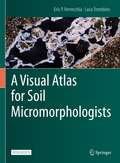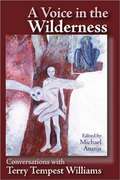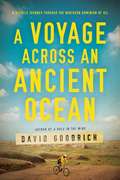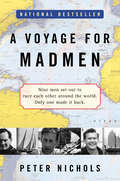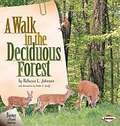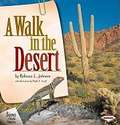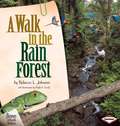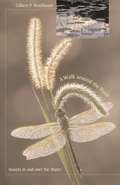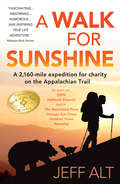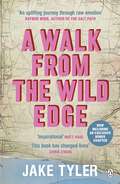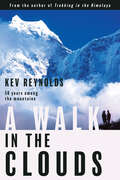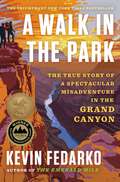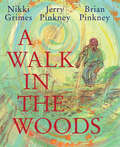- Table View
- List View
A Tree is a Plant
by Clyde Robert Bulla<P>This book describes a tree's life cycle through the seasons. <P>[This text is listed as an example that meets Common Core Standards in English language arts for K-1 at http://www.corestandards.org.]
A Tree's Secret Story (Fountas & Pinnell Guided Classroom, Grade 3)
by Jeff ScarlettiNIMAC-sourced textbook
A True Account: A Radio 2 Book Club Pick for Autumn 2023!
by Katherine HoweFrom New York Times-bestselling author Katherine Howe comes this daring account of one woman's adventure as one of the most feared sea rovers of all time, perfect for fans of Kate Mosse and Jess Kidd 'An absolute page turner, full of unexpected twists and turns.' Celia Rees, author of Pirates! In Boston, as the Golden Age of Piracy comes to a bloody close, Hannah Masury – bound into service at a waterfront inn since childhood – is ready to take her life into her own hands. When William Fly is hanged for piracy in the town square, the teenage Hannah is watching. Forced to flee for her life, Hannah disguises herself as a cabin boy and joins the pitiless crew of another notorious real-life pirate, Edward "Ned" Low. To earn her freedom and finally change the tide of her own future, Hannah must hunt down William Fly's lost treasure. Meanwhile in 1930, Professor Marian Beresford pieces this bewitching story together, seeing her own lack of freedom reflected back at her as she watches Hannah's transformation. At the centre of Hannah Masury&’s account, however, lies a centuries-old mystery that Marian is determined to solve. It soon becomes clear that Hannah was once just as determined to take this secret to her grave.A True Account tells the unforgettable, interleaved stories of two women in different worlds, both shattering the rules of their own society, both daring to risk everything to go forge their own adventure. 'A feast for the sea-loving senses.' - Sarah Penner, author of The Lost Apothecary
A Trust Betrayed: The Untold Story of Camp Lejeune and the Poisoning of Generations of Marines and Their Families (A Merloyd Lawrence Book)
by Mike MagnerWhile the big bad corporation has often been the offender in many of the world's greatest environmental disasters, in the case of the mass poisoning at Camp Lejeune the culprit is a revered institution: the US Marine Corps. For two decades now, revelations have steadily emerged about pervasive contamination, associated clusters of illness and death among the Marine families stationed there, and military stonewalling and failure to act. Mike Magner's chilling investigation creates a suspenseful narrative from the individual stories, scientific evidence, and smoldering sense of betrayal among those whose motto is undying fidelity. He also raises far-reaching and ominous questions about widespread contamination on US military bases worldwide.
A Universe Big & Small: A Story About Carl Sagan
by James YangGeisel Award–winning creator James Yang explores the mysteries of the universe, inspired by the work of lauded astronomer Carl Sagan.When Carl stared out the window, he had many questions.Astronomer and scientist Carl Sagan loved asking questions—he wanted to learn about everything from the smallest atoms to the vastness of the galaxy. And by using his imagination and allowing himself to dream up questions big and small, he inspired others to keep exploring the mysteries of the universe and our place in it.Geisel Award-winning author and illustrator James Yang invites readers on a fantastic journey through the cosmos, inspired by the life and work of Carl Sagan.
A Victorian Flower Dictionary
by Vanessa Diffenbaugh Mandy Kirkby"A flower is not a flower alone; a thousand thoughts invest it." Daffodils signal new beginnings, daisies innocence. Lilacs mean the first emotions of love, periwinkles tender recollection. Early Victorians used flowers as a way to express their feelings--love or grief, jealousy or devotion. Now, modern-day romantics are enjoying a resurgence of this bygone custom, and this book will share the historical, literary, and cultural significance of flowers with a whole new generation. With lavish illustrations, a dual dictionary of flora and meanings, and suggestions for creating expressive arrangements, this keepsake is the perfect compendium for everyone who has ever given or received a bouquet.From the Hardcover edition.
A Visit to the Recycling Center
by Tracy Vonder BrinkTravel through Rumpke’s recycling center to find a plastic jug? Trash that can be recycled takes a ride on the conveyor belt to become something new! Try to find the milk jug on the conveyor belt! Trash at the factory goes through many machines to make sure it can be recycled. Can you guess what the milk jug will help make once it leaves the factory? What other types of trash go on the conveyor belt?
A Visual Atlas for Soil Micromorphologists
by Eric P. Verrecchia Luca TrombinoThis open access atlas is an up-to-date visual resource on the features and structures observed in soil thin sections, i.e. soil micromorphology. The book addresses the growing interest in soil micromorphology in the fields of soil science, earth science, archaeology and forensic science, and serves as a reference tool for researchers and students for fast learning and intuitive feature and structure recognition. The book is divided into six parts and contains hundreds of images and photomicrographs. Part one is devoted to the way to sample properly soils, the method of preparation of thin sections, the main tool of soil micromorphology (the microscope), and the approach of soil micromorphology as a scientific method. Part two focuses on the organisation of soil fragments and presents the concept of fabric. Part three addresses the basic components, e.g. rocks, minerals, organic compounds and anthropogenic features. Part four lists all the various types of pedogenic features observed in a soil, i.e. the imprint of pedogenesis. Part five gives interpretations of features associated with the main processes at work in soils and paleosols. Part six presents a view of what the future of soil micromorphology could be. Finally, the last part consists of the index and annexes, including the list of mineral formulas. This atlas will be of interest to researchers, academics, and students, who will find it a convenient tool for the self-teaching of soil micromorphology by using comparative photographs.
A Voice in the Wilderness
by Michael AustinWith her distinctive, impassioned voice and familiar felicity of language, Terry Tempest Williams talks about wilderness and wildlife, place and eroticism, art and literature, democracy and politics, family and heritage, Mormonism and religion, writing and creativity, and other subjects that engage her agile mindin a set of interviews gathered and introduced by Michael Austin to represent the span of her career as a naturalist, author, and activist.
A Voyage Across an Ancient Ocean: A Bicycle Journey Through the Northern Dominion of Oil
by David GoodrichIn the face of widespread misinformation and misunderstanding, a climate scientist ventures into the vast heart of America&’s new oil country on just two wheels.Recently recovered from his epic bicycle journey that took him from the Delaware shore to the Oregon coast, distinguished climate scientist David Goodrich sets out on his bike again to traverse the Western Interior Seaway—an ancient ocean that once spread across half of North America. When the waters cleared a geologic age ago, what was left behind was vast, flat prairie, otherworldly rock formations, and oil shale deposits. As Goodrich journeys through the Badlands and Theodore Roosevelt National Park and across the prairies of the upper Midwest and Canada, we get a raw and ground-level view of where the tar sands and oil reserves are being opened up at an incredible and unprecedented pace. Extraordinary and unregulated, this &“black goldrush&” is boom and bust in every sense. In a manner reminiscent of John McPhee and Rachel Carson, combined with Goodrich&’s wry self-deprecation and scientific expertise, A Voyage Across an Ancient Ocean is a galvanizing and adventure-filled read that gets to the heart of drilling on our continent.
A Voyage For Madmen: Nine Men Set Out To Race Each Other Around The World. Only One Made It Back ...
by Peter NicholsIn 1968, nine sailors set off on the most daring race ever held: to single-handedly circumnavigate the globe nonstop. It was a feat that had never been accomplished and one that would forever change the face of sailing. Ten months later, only one of the nine men would cross the finish line and earn fame, wealth, and glory. For the others, the reward was madness, failure, and death. In this extraordinary book, Peter Nichols chronicles a contest of the individual against the sea, waged at a time before cell phones, satellite dishes, and electronic positioning systems. A Voyage for Madmen is a tale of sailors driven by their own dreams and demons, of horrific storms in the Southern Ocean, and of those riveting moments when a split-second decision means the difference between life and death.
A Voyage to the Island of the Articoles
by Andre Maurois"Dangerous, charming, and funny, this elegant miniature rediscovery will delight even brilliant minds."-Simon Van BooyAndré Maurois' novella, published in the same year as Margaret Mead's Coming of Age in Samoa, is about a couple who become shipwrecked on an uncharted South Seas Island and discover a race of literary zealots for whom every subject and feeling needs to be expressed as a form of literary art. As explained by Alberto Manguel, "An Articole will publish not only his Intimate Journal, but also his Journal of My Intimate Journal; and his wife will publish My Husband's Journal of His Intimate Journal."
A Walk In The Deciduous Forest
by Rebecca L. JohnsonTake a walk in the deciduous forest. In this biome of leafy trees and fast changing weather, there are four very different seasons. As you walk through this incredible biome, discover how all living things form a community and depend on each other for survival.
A Walk In The Desert
by Rebecca L. JohnsonTake a walk through the desert. This hot, dry biome of the southwest is full of life. How do plants and animals of the desert live? As you wander through the desert, discover how each and every plant and animal relies on the others to live and grow.
A Walk In The Rain Forest
by Rebecca L. JohnsonTake a walk in the rain forest. This hot and humid biome is home to countless trees, animals, plants, and insects. Each and every insect, plant, and animal of the rain forest is dependent on all the others. Explore this exciting world of howling monkeys, calling birds, and endless rain.
A Walk Through The Heavens
by Wil Tirion Milton D. HeifetzA Walk through the Heavens is a guide to the pathways of the sky. It contains unique, simplified maps of the constellations and instructions on how to measure their sizes and the separations between them. Using this information you can find the constellations very easily and take a mind's eye journey from one constellation to its neighbours. The ancient myths and legends surrounding the constellations are retold, enriching our understanding of how historical peoples saw the awe-inspiring spectacle of a sky sprinkled with stars. Magically illustrated by Wil Tirion, this book does not assume that the reader has binoculars, and is ideal to inspire the young astronomer just starting out on a journey across the starlit skies.
A Walk around the Pond: Insects in and over the Water
by Gilbert WaldbauerA water strider darts across a pond, its feet dimpling the surface tension; a giant water bug dives below, carrying his mate’s eggs on his back; hidden among plant roots on the silty bottom, a dragonfly larva stalks unwary minnows. Barely skimming the surface, in the air above the pond, swarm mayflies with diaphanous wings. Take this walk around the pond with Gilbert Waldbauer and discover the most amazingly diverse inhabitants of the freshwater world.In his hallmark companionable style, Waldbauer introduces us to the aquatic insects that have colonized ponds, lakes, streams, and rivers, especially those in North America. Along the way we learn about the diverse forms these arthropods take, as well as their remarkable modes of life—how they have radiated into every imaginable niche in the water environment, and how they cope with the challenges such an environment poses to respiration, vision, thermoregulation, and reproduction. We encounter the caddis fly larva building its protective case and camouflaging it with stream detritus; green darner dragonflies mating midair in an acrobatic wheel formation; ants that have adapted to the tiny water environment within a pitcher plant; and insects whose adaptations to the aquatic lifestyle are furnishing biomaterials engineers with ideas for future applications in industry and consumer goods.While learning about the evolution, natural history, and ecology of these insects, readers also discover more than a little about the scientists who study them.
A Walk for Sunshine: A 2,160 Mile Expedition for Charity on the Appalachian Trail
by Jeff AltJeff Alt takes you along every step of his 2,160-mile Appalachian Trail adventure filled with humorous, frightening, and inspirational stories including bears, bugs, blisters, captivating characters, skunk bed mates, and hilarious food cravings. As Alt walked more than 5 million steps through freezing temperatures, driving rain, and sunny skies, he was constantly buoyed by the knowledge that his walk was dedicated to his brother who has cerebral palsy. Alt's adventure inspired an annual fundraiser which has raised over $500,000 for Sunshine, the home where his brother lives. This is the 20th anniversary edition. As you walk along with Alt, experience the success of turning dreams into goals and achieving them. Alt's lessons from the trail celebrate family, stewardship of the earth, good health, and the American spirit. less
A Walk from the Wild Edge: ‘This Book Has Changed Lives’ Chris Evans
by Jake TylerThe remarkable true story of one man's inspiring journey through his 3,000 mile walk across the country'A great and inspirational read' MATT HAIG, bestselling author of Reasons to Stay Alive'Inspiring' INDEPENDENT'An uplifting and inspirational journey through raw emotion' RAYNOR WINN, bestselling author of The Salt PathAS SEEN ON BBC BREAKFAST______Jake Tyler had forgotten how to feel alive.With only a pair of boots and a backpack, he set off on a 3000-mile walk around Britain - along coastal paths, over mountains, through every national park.His journey became his road to recovery. On it he rediscovered the British landscape, the extraordinary kindness of strangers and most importantly, his place in the world.This is his inspiring story, away from the wild edge.______'Jake you have changed people's lives . . . we are all fans!' Chris Evans, Virgin Radio'An incredible journey, an inspirational memoir . . . beautiful' Zoe Ball, BBC Radio 2'Inspiring . . . It's something that will help many through these dark times' Bryony Gordon'This book is a tonic. Until we can all get out and explore Britain's beauty for ourselves again, this is the ideal substitute' Mirror'So compelling in his honesty . . . very poignant' Express'A tale told with courageous honesty. There's much to learn here about how reconnecting with nature and trusting others can rekindle the joy of being alive' BBC Countryfile 'A testament to the power of human connection, this is a physical and mental journey to inspire hope even in the darkest of times' National Geographic
A Walk in the Animal Kingdom: Essays on Animals Wild and Tame (The Wonders of Nature)
by Jerry DennisAnimals are everywhere in our lives. We follow them into the wild, we invite them into our homes, they inhabit our dreams, mythologies, folklores, and popular cultures. What is this powerful bond? Why are we so fascinated with animals of every kind? And why has our relationship with them always been riddled with such complexity and contradiction?A Walk in the Animal Kingdom explores the world of animals with the inquisitiveness, depth, and gentle humor that readers across the globe have come to expect from the acclaimed author-artist team of Jerry Dennis and Glenn Wolff. The book is an inquiry into animals of the world, their astonishing diversity and abundance; their mating habits, defensive strategies, and other behaviors; their extraordinary senses of sight, hearing, and smell. It is also an exploration of our profound connection with them, from the joys they inspire and the fears they arouse, to their prominence in our lives as pets, team mascots, and embodiments of wild nature—and the paradox that allows us to battle to protect certain species while ignoring others that are disappearing at a rate perhaps unequaled in the history of our planet. Like the previous collaborations of Dennis and Wolff, A Walk in the Animal Kingdom is certain to become a classic among books about nature—its wonders, its complexities, and our place in it.
A Walk in the Clouds: 50 Years Among the Mountains
by Kev ReynoldsA Walk in the Clouds: 50 Years Among the Mountains is a heartwarming, inspirational, and evocative collection of memories and short stories from Kev Reynolds, a prolific and celebrated guidebook author who has been roaming the mountains for a half-century. These recollections trail Reyonlds' journeys through some of his favorite and most memorable lessons learned on the mountains. The people met, experiences shared, and cultures bridged throughout Reynolds' travels make for an engaging read for hikers and non-hikers alike. Shadowing Reynolds across the Moroccan Atlas, the Pyrenees trails, the European Alps, and even the Himalayas gives the reader the feeling not only of hiking the trails, but also of forming the relationships and connections throughout the world that Reynolds was able to create. This book motivates the common reader to undertake something they have never done before because, as the reader learns from Reynolds, that is where some of the best experiences come from.
A Walk in the Forest
by Maria DekA Walk in the Forest is a stunning invitation to discover the woods as a place for both imaginative play and contemplation: collect pinecones, feathers, or stones; follow the tracks of a deer; or listen to the chirping of birds and the whisper of trees. Build a shelter and play hide-and-seek. Pretend the woods are a jungle, or shout out loud to stir up the birds! The forest comes alive in all its mysterious glory in Maria Dek's charming watercolor images and poetic text.
A Walk in the Park: The True Story of a Spectacular Misadventure in the Grand Canyon
by Kevin FedarkoA New York Times Bestseller * Winner of the 2024 National Outdoor Book Award in Outdoor Literature * Winner of the 2025 Andrew Carnegie Medal for Excellence in Nonfiction * Named a Best Book of the Year by the New York Times, Air Mail, Smithsonian Magazine, and Financial Times &“A triumph. Fedarko doesn&’t describe awe; he induces it.&” —The New York Times Book Review * &“Passionate…memorable…life-affirming.&” —The Wall Street Journal From the author of the beloved bestseller The Emerald Mile, a rollicking and poignant account of an epic 750-mile odyssey, on foot, through the heart of America&’s most magnificent national park and the grandest wilderness on earth.Two friends, zero preparation, one dream. A few years after quitting his job to follow an ill-advised dream of becoming a guide on the Colorado River, Kevin Fedarko was approached by his best friend, National Geographic photographer Pete McBride, with a vision as bold as it was harebrained. Together, they would embark on an end-to-end traverse of the Grand Canyon, a journey that, McBride promised, would be &“a walk in the park.&” Against his better judgment, Fedarko agreed, unaware that the small cluster of experts who had completed the crossing billed it as &“the toughest hike in the world.&” The ensuing ordeal, which lasted more than a year, revealed a place that was deeper, richer, and far more complex than anything the two men had imagined—and came within a hair&’s breadth of killing them both. They struggled to make their way through a vertical labyrinth of thousand-foot cliffs and crumbling ledges where water is measured out by the teaspoon and every step is fraught with peril—and where, even today, there is still no trail along the length of the country&’s best-known and most iconic park. Along the way, veteran long-distance hikers ushered them into secret pockets, invisible to the millions of tourists gathered on the rim, where only a handful of humans have ever laid eyes. Members of the canyon&’s eleven Native American tribes brought them face-to-face with layers of history that forced them to reconsider myths at the center of our national parks—and exposed them to the threats of commercial tourism. Even Fedarko&’s dying father, who had first pointed him toward the canyon more than forty years earlier but had never set foot there himself, opened him to a new way of seeing the landscape. And always, there was the great gorge itself: austere and unforgiving but suffused with magic, drenched in wonder, and redeemed by its own transcendent beauty. A singular portrait of a sublime place, A Walk in the Park is a deeply moving plea for the preservation of America&’s greatest natural treasure.
A Walk in the Woods
by Nikki GrimesIn this moving account of loss, a boy takes a walk in the woods and makes a discovery that changes his understanding of his father.A week after the funeralI stare in the morning mirrorAngry that my father&’s eyes Stare back at me.Confused and distraught after the death of his father, a boy opens an envelope he left behind and is surprised to find a map of the woods beyond their house, with one spot marked in bright red. But why? The woods had been something they shared together, why would his father want him to go alone? Slowly, his mind settles as he sets off through the spaces he once explored with his dad, passing familiar beech and black oak trees, flitting Carolina wrens, and a garter snake they named Sal. When he reaches the spot marked on the map, he finds pages upon pages of drawings of woodland creatures, made by his father when he was his age. What he sees shows him a side of his dad he never knew, and something even deeper for them to share together. His dad knew what he really needed was a walk in the woods.New York Times bestselling author Nikki Grimes and the Caldecott Award winning illustrator Jerry Pinkney spent the early days of the pandemic emailing back and forth and talking about collaborating on a book, with Jerry sharing all of the pictures he took of the woods around his house. From this, they conjured a story of a boy&’s struggle with grief, and all the things he sees and feels on a walk through the forest.Jerry sadly passed away in the fall of 2021, but not before he delivered tight pencil sketches of the forests he loved. When his son Brian took on the task of completing the illustrations, he found himself connecting with his father in a whole new way, his experience mirroring that of the boy in the book. The result is a simultaneously touching and deeply authentic story about the ways shared pastimes keep us close to those we&’ve lost.A Junior Library Guild Gold Standard Selection
A Walk in the Woods (Fountas & Pinnell Classroom, Guided Reading)
by Jacqueline AdamsNIMAC-sourced textbook
